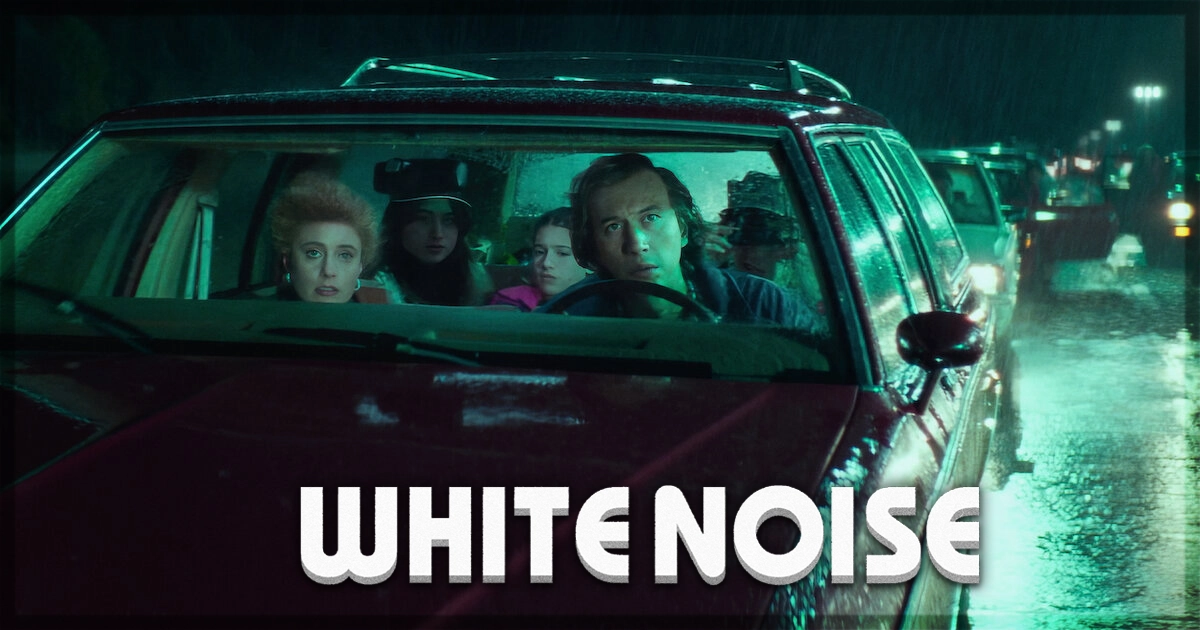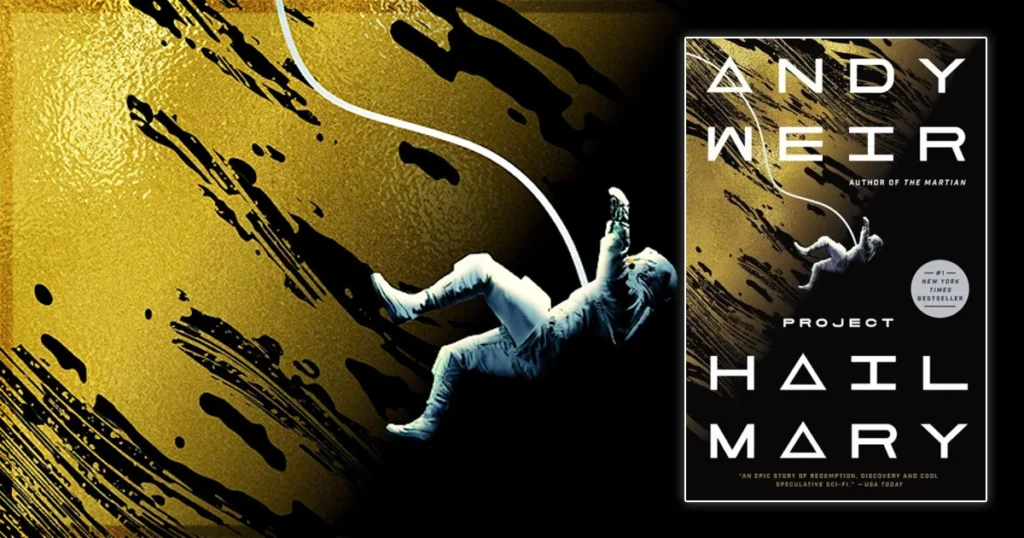2022’s Venice Film Festival opened with the Noah Baumbach directed White Noise, a quirky and chaotic genre-mash up. It is a visually enrapturing film about a family surviving a toxic event while grappling with the feeling of impending doom and the mundane cataclysm of their lives. Adapted from Don DeLillo’s 1985 novel of the same name, this is Baumbach’s first directorial effort to not be of his own original writing.
Baumbach’s knack for idiosyncratic comedy in White Noise
In the 1980 mid-western American town of Glassboro, Jack Gladney (Adam Driver) and his wife Babette (Greta Gerwig) argue about how they wish to be the first one of them to die. Death, and its inevitability, is one of the many themes that runs throughout the frenzied White Noise and its trio of sections: Waves and Radiation, The Airborne Toxic Event and Dylarama. After an accident causes a truck filled with toxic chemicals to spill into the local atmosphere, Jack and Babette (fondly nicknamed Baba), along with their respective stepchildren and their own child must evacuate the town.
The first section lays the groundwork for the various issues that haunt – sometimes literally – the protagonists: depression, anxiety, drug use, and existentialism along with elements of imposter syndrome. Jack (or J.A.K Gladney as he’s introduced as) is the leading expert on Adolf Hitler, and yet doesn’t speak German despite mandating his students to take one year of language lessons. The myriad of introductions made in this section include Elliot Lasher (Andre 3000), one of Jack’s colleagues, Winnie Richards (Jodie Turner-Smith) as a brilliant – “We’re all brilliant here.” she pipes – colleague of Jack’s whom he wishes to research Dylar, the unlisted drug Babette refuses to acknowledge she is taking and Murray Siskind (Don Cheadle) as an emulator of Jack, who wants to be the lead on Elvis academia and enlists Jack’s help on this matter.
Murray is the most compelling character in the ensemble, with his rousing speeches paying dividends within the final act, but he’s all too minimal within the story for how much charisma Cheadle brings to the screen. His highlight culminates brilliantly in a double-act scene bringing together Elvis – arguably the American idol – and Hitler (America’s antithesis), which brings on board another theme to the film – the American Dream and heroes – but ultimately falls short of substance. It’s one of the many inconsequential foibles that permeates the picture. The second section, The Airborne Toxic Event, is where Baumbach, broaching new ground in his filmography, enjoys combining genres. From employing horror elements to slapstick comedy to crime noir, these beats then lead to topics about disaster tropes.
Baumbach gets, along with cinematographer Lol Crawley, to play with scope in this section, as the characters, predictably hitting cliché evacuation traffic, can finally be introduced to the section’s titular event, a ‘billowing cloud’ of toxic fallout: the camera rising to take in the splendor of impending death. This section features the more compelling imagery of the film, as Crawley shoots these gorgeous visuals; one such shot stands out, fading in with contrasting greens and blues in between the side portraits of Jack and Babette.
But Baumbach’s writing is messy in contrast to these visuals, as it consistently ponders different ideas. German nuns are shown arguing against religion; the film shows joy in the horror of American car crashes while an entire section is devoted to engaging with the ideas of Fake News and the conspiracy theories that emerge with them. This is along with the unavoidable comparison to the Covid-19 pandemic, as a brief discussion on the protagonist’s non-use of face coverings is briefly brought up. The script even entertains some commentary on capitalism with an introduction of a franchised eatery. It’s all far too much for the film to handle delicately, and instead, it throws everything at the audience, hoping that some thematic material will stick.
The third section pertains more to Babette’s drug use and the existential reasoning she has for it and her actions. The first act spent time with child Denise (Raffey Cassidy) and her worries for Baba, while the third forgets her, along with the other children outside of what amounts to a brief cameo in the closing moments. Baumbach chooses to instead focus on the relationship between Jack and Babette, as White Noise transforms into a comically absurd crime thriller that doesn’t reach the crescendo it needs to in tension, drama or emotion. It perhaps doesn’t help that Baumbach’s intellectual posturing forgoes authenticity, with characters talking like how they would in Shakespearean productions, with a pretentious panache and rhythmically, lyrically. It sustains the notion that you are watching something produced and acted by people.
Even as tonally untamed and with such a wild hodgepodge of tones, White Noise , remains an intriguing genre journey. It is one that maintains this off-kilter feel throughout, lending to a constantly ebullient feeling as Baumbach’s knack for idiosyncratic comedy lends itself well to the farcical story. It is never completely all together, but allows itself to be so free and playful about the bindings of its genres that when the end-credits sequence appears, you’re absolutely convinced that this wacky horror-thriller-drama-comedy-disaster movie is worthy of such a credits sequence.
White Noise is now streaming on Netflix.
You can learn more about White Noise at the Netflix site for this title.
You might also like…
‘Project Hail Mary’ Review: Andy Weir’s 2021 Sci-Fi Novel


